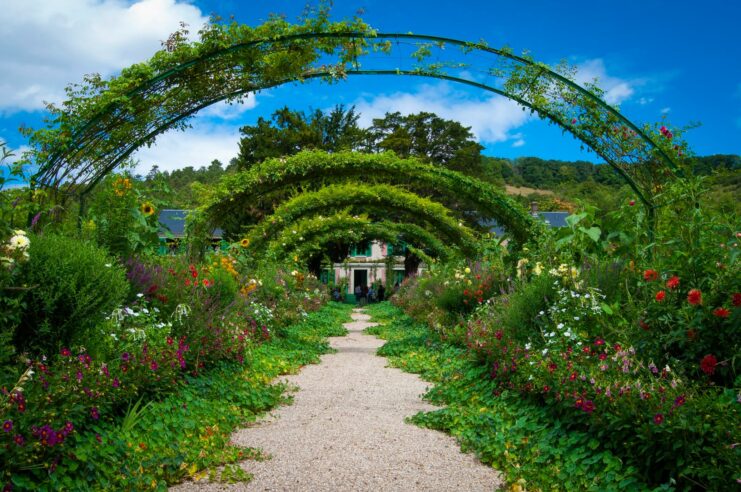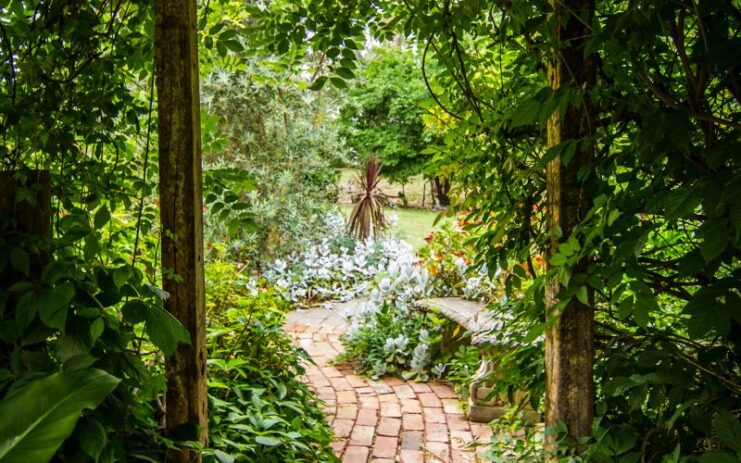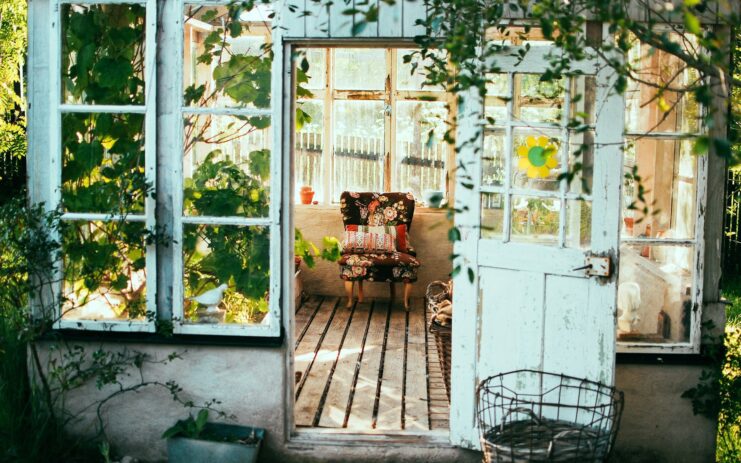In today’s world, where environmental consciousness is paramount, the art of gardening is evolving. The Eco Garden represents a harmonious blend of beauty and sustainability, offering a serene retreat that requires minimal upkeep while respecting the delicate balance of nature.
This article serves as a guide for those aspiring to cultivate a garden that not only thrives with life but also champions eco-friendly practices. We’ll explore how to seamlessly integrate low-maintenance designs, sustainable materials, and techniques that nurture our planet.
Understanding Eco-Friendly Gardening
Eco-friendly gardening transcends traditional horticulture, weaving environmental awareness into the very fabric of garden design. It’s an approach that prioritises the health of the ecosystem, focusing on practices that support and sustain local wildlife, soil, and water resources.
This gardening philosophy extends beyond plant selection; it encompasses everything from the materials used for garden beds to the water conservation methods employed. The benefits are profound – not only does it foster a more robust and self-sustaining garden, but it also offers a tranquil space that positively impacts mental and physical well-being.
In embracing these principles, gardeners play a crucial role in promoting environmental stewardship, ensuring that their green spaces contribute positively to the larger global ecosystem.
Designing for Low Maintenance

The allure of a low-maintenance garden lies in its simplicity and ease of care. Such gardens are designed with practicality in mind, focusing on minimising regular gardening chores without compromising beauty.
Selecting native plants that grow well locally is a cornerstone of low-maintenance gardening. These plants are adapted to the local environment, requiring less water, fertiliser, and care than non-native species. They also provide essential habitats for local wildlife. Another aspect is the thoughtful layout of the garden, which includes grouping plants with similar needs together and using mulch to retain soil moisture and suppress weeds.
Incorporating perennial and ground-covering plants can further reduce maintenance. These plants return year after year, offering lasting structure and colour with minimal effort. By emphasising these elements, your garden can become a self-sustaining oasis that flourishes with minimal intervention.
Incorporating Sustainable Materials
In the pursuit of an eco-friendly garden, the choice of materials plays a pivotal role. Sustainable materials not only reduce the environmental impact but also add to the aesthetic and functional value of the garden. One such material is composite decking, which offers a perfect blend of durability and eco-consciousness.
Composite decking is made from a mixture of wood fibres and recycled plastics, making it a great eco-friendly alternative to traditional wood decking. It requires minimal maintenance, resisting rot, warping, and splintering, thus reducing the need for frequent replacements or chemical treatments. This longevity makes it a cost-effective and sustainable choice for garden decking.
In addition to decking, using recycled or locally sourced materials for garden paths, borders, and structures also contributes to a garden’s sustainability. These choices not only conserve resources but also add a unique and personal touch to the garden, reflecting a commitment to environmental responsibility.
Water Conservation Strategies

Water conservation is a critical aspect of eco-friendly gardening, essential for preserving this precious resource and ensuring a garden that’s both sustainable and beautiful. Employing smart water management techniques not only benefits the environment but also reduces your water bill.
One effective strategy is the use of rain barrels to collect and store rainwater for later use in the garden. This method is straightforward and highly effective in reducing reliance on tap water. Additionally, consider installing a drip irrigation system, which delivers water directly to the roots of plants, minimising waste and evaporation compared to traditional sprinkler systems.
Choosing drought-resistant native plants is another key to reducing water consumption. These plants are adapted to thrive in the local climate, often requiring far less water than their exotic counterparts. Mulching around plants is also beneficial, as it helps retain soil moisture, reduces evaporation, and prevents water runoff. By integrating these water-saving practices, your garden can flourish with minimal water input, making it both eco-friendly and low-maintenance.
Promoting Biodiversity
Cultivating biodiversity is a fundamental element of an eco-friendly garden. By fostering a variety of plant and animal life, your garden becomes not only a place of beauty but also a sanctuary for wildlife. Diverse plantings attract a range of beneficial insects, birds, and other wildlife, each playing a role in the garden’s ecological balance.
To promote biodiversity, consider planting a mix of native flowering plants, shrubs, and trees. These plants offer food and shelter to native species, including pollinators like bees and butterflies, essential for a healthy ecosystem. Creating a small pond or a bird bath can also attract wildlife, providing them with a vital water source.
In addition to supporting wildlife, diverse plantings can also create a more resilient garden. A variety of plants can better withstand pests and diseases, reducing the need for chemical interventions. This approach to gardening not only enhances the natural beauty of your space but also contributes to the conservation of local ecosystems.
Organic Gardening Practices

Embracing organic gardening practices is a key step in creating an eco-friendly garden. This means avoiding synthetic fertilisers and chemical pesticides, which can harm the environment and disrupt the natural balance of your garden. Instead, focus on natural ways to nourish and protect your plants.
Composting is an excellent organic practice. By turning kitchen scraps and yard waste into nutrient-rich compost, you not only reduce waste but also provide a natural fertiliser for your garden. Additionally, practising natural pest control, such as encouraging beneficial insects and using plant-based remedies, keeps your garden healthy without relying on harmful chemicals. These organic methods contribute to a sustainable and thriving garden ecosystem.
Conclusion
In essence, an Eco Garden is a testament to the harmony between nature and thoughtful gardening. By choosing low-maintenance designs, sustainable materials like composite decking, water-wise practices, and organic methods, you create a space that is as nurturing to the earth as it is to your soul. Embrace these principles and watch your garden flourish into an eco-friendly haven.

